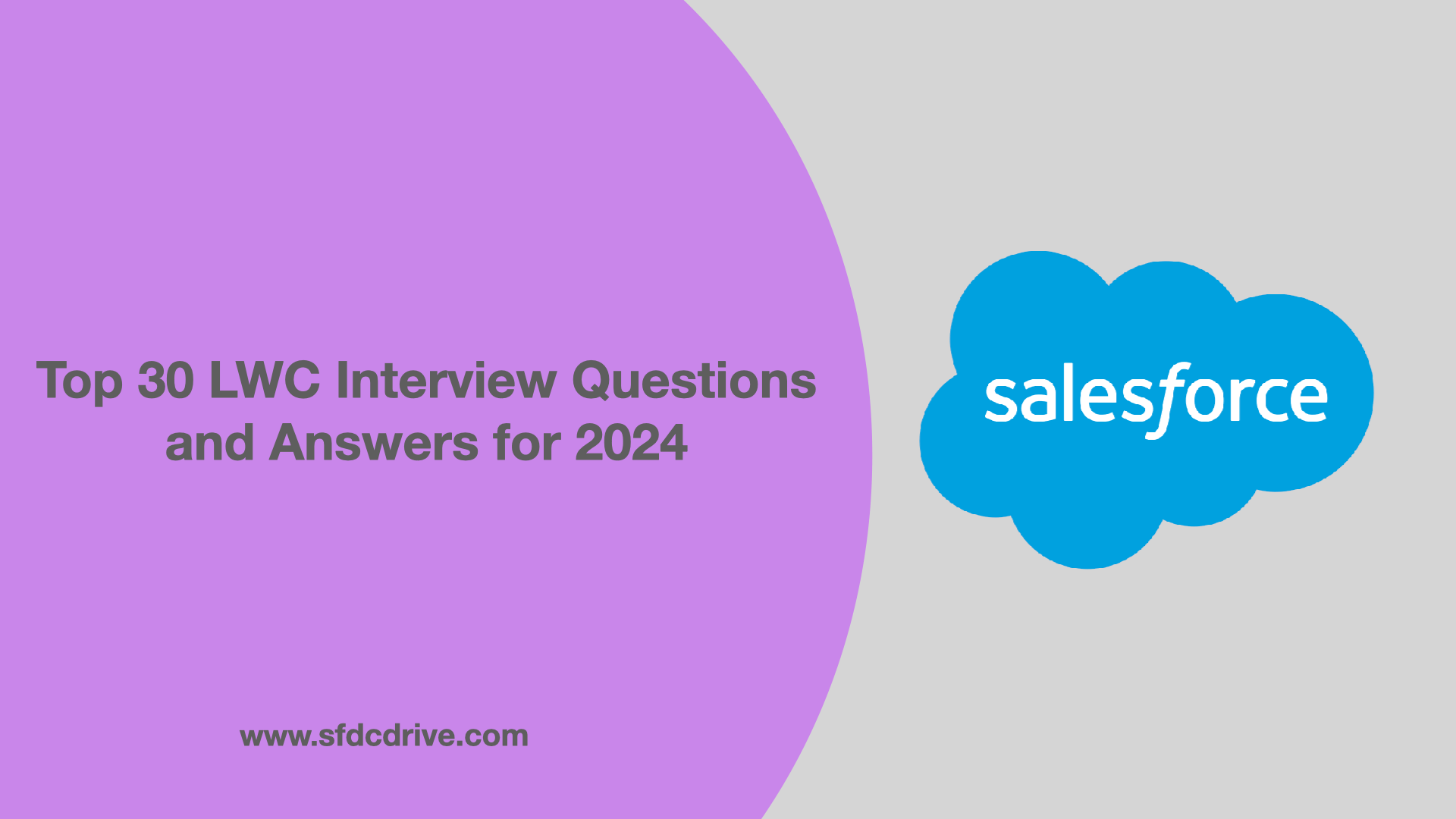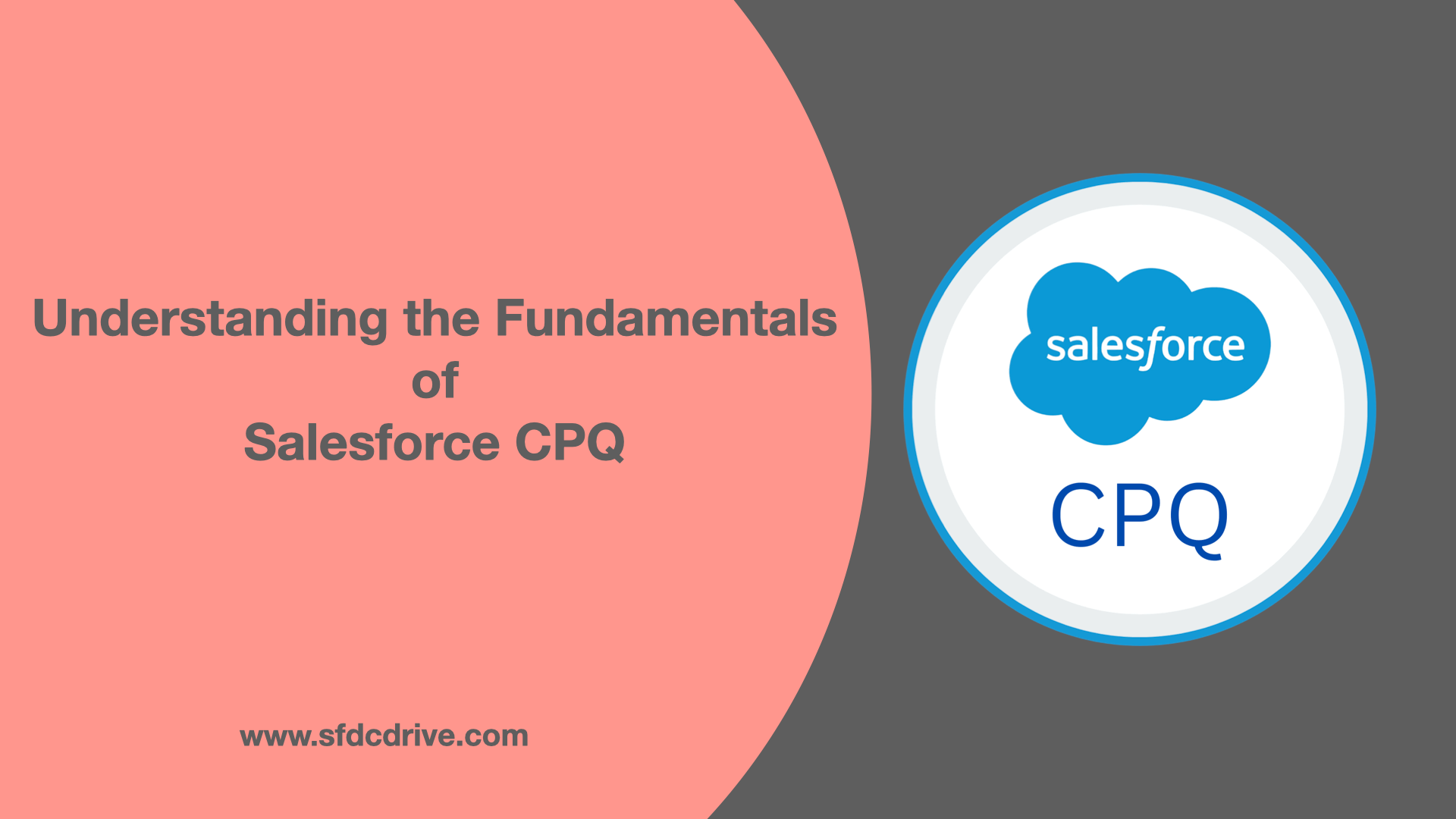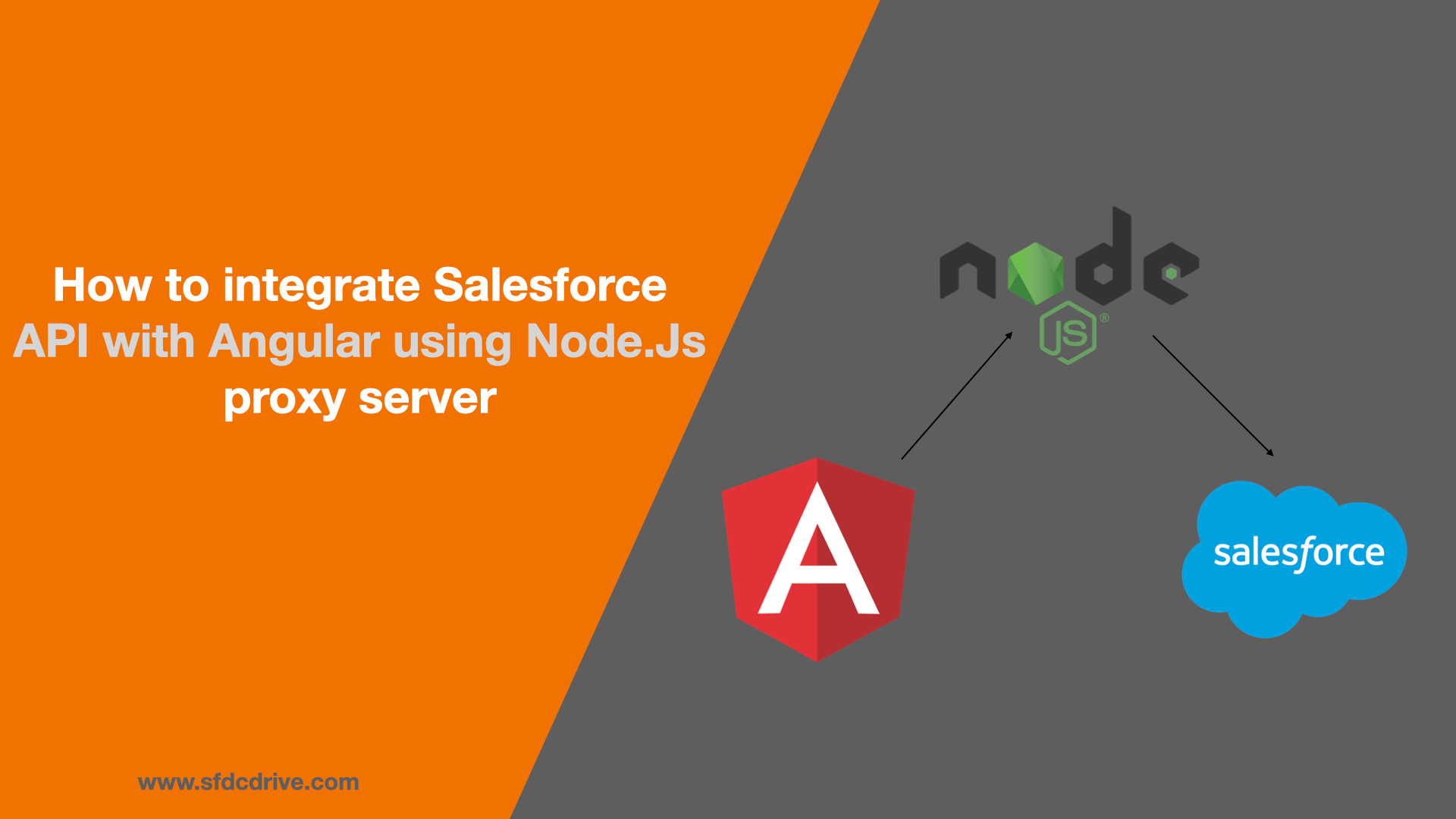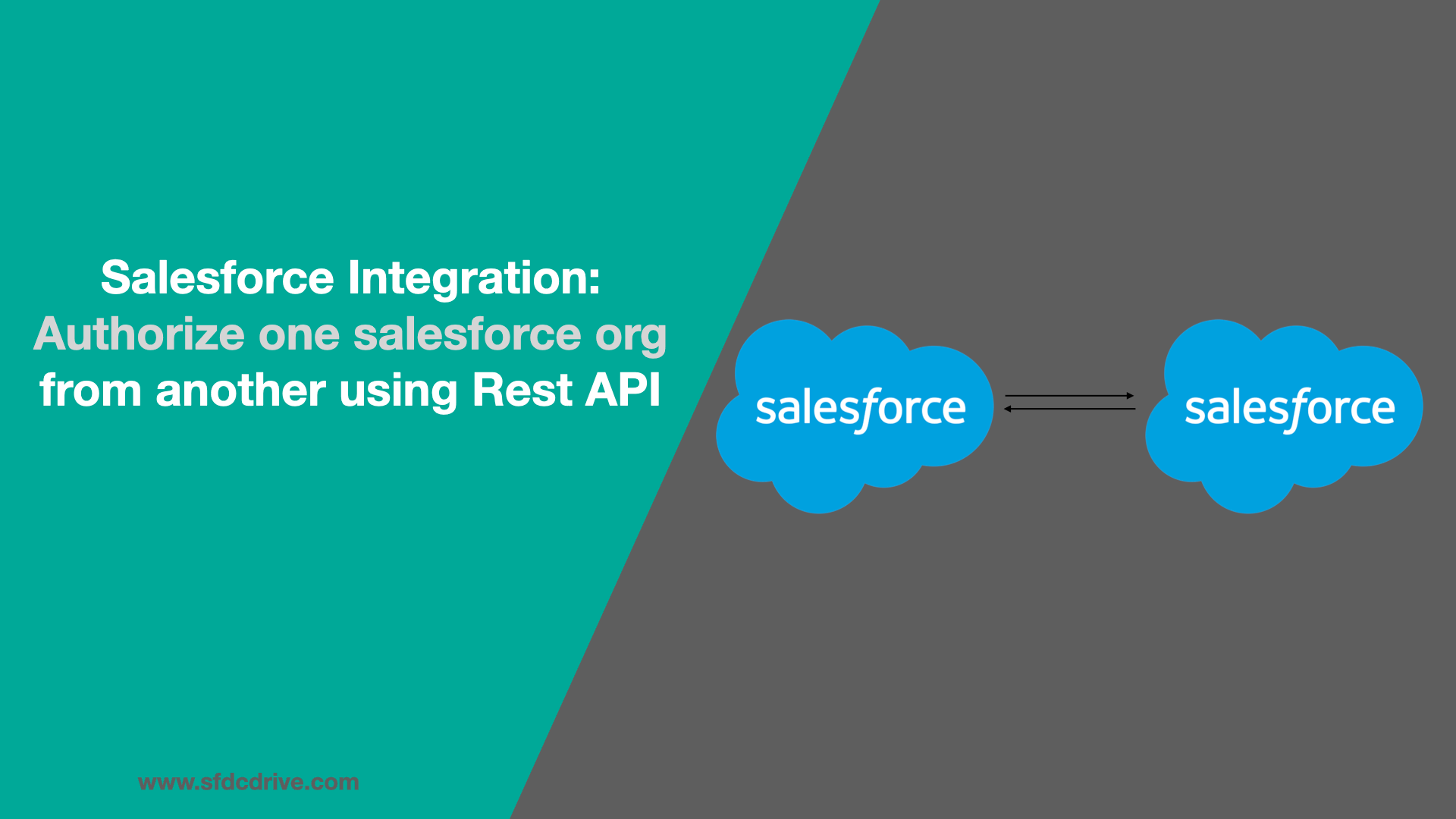Table of Contents
Introduction
In this post, we’ll learn about LWC, which is one of the most in-demand frameworks developed by Salesforce for building web components on the Lightining platform. LWC, also known as Lightning Web Component, was launched to the global market by Salesforce in 2018. It is a framework that is built on top of the Web Components standard. LWC is developed with basic HTML and JavaScript. Due to its popularity in the industry, there is a high need for LWC Salesforce developers. It is advised that you thoroughly review this collection of LWC interview questions and answers before attending an interview.
LWC interview questions
1. Why does the LWC perform faster than the Aura components?
LWC is a lightweight framework built on top of the Web Components standards (HTML and JavaScript), which uses a less complex abstraction layer, and Aura Components uses a more extensive abstraction layer to achieve component-based development, which could contribute to additional processing overhead. This is the reason LWC is faster than Aura components.
2. What is @api used for in LWC?
the @api decorator is used to expose public properties and methods from a child lightning web component, making them available for use in a parent lightning web component
When the @api decorator is applied to a method in a Lightning web component, it exposes that method as a public API for other components to invoke. This means that the method can be called from a parent component or any other component that has access to the child component.
Using @api facilitates communication between components, enabling a more modular and reusable component-based architecture in LWC
3. What is Salesforce CLI?
Salesforce CLI is a command-line interface tool provided by Salesforce for interacting with the Salesforce platform. We can use Visual Studio Code and Salesforce CLI to create projects for Salesforce orgs and manage them locally.
4. Name some of the important lifecycle hooks in LWC.
Some important lifecycle hooks in LWC are:
- constructor()
- connectedCallback()
- renderedCallback()
- disconnectedCallback()
5. What is the difference between @api and @track in LWC?
@api is used for exposing properties and methods for external use, while @track is used for making a property reactive within the component itself.
6. What is the purpose of the wire service in LWC?
The wire service provides an immutable stream of data to the component. Each value in the stream is a newer version of the previous value set. We call the wire service reactive in part because it supports reactive variables, which are prefixed with $. If a reactive variable changes, the wire service provides new data. The @wire property is useful when you want to consume the data or an error.
7. Can Lightning Web components be embedded within Aura Components?
Yes, we can embed LWC within Aura Components.
8. Can we use LWC in the experience cloud?
Yes, LWC can be used in the Experience Cloud to create dynamic and interactive components that seamlessly integrate with the overall user experience. These components can leverage the features and capabilities of LWC.
9. How many different ways are there to make lightning components?
There are two ways in which lightning components can be made. They are
- Aura Components model.
- Lightning Web Components model.
10. Explain the concept of the Lightning Data Service (LDS).
Lightning Data Service (LDS) is a Salesforce service that provides a standardized way to access and manipulate data in Lightning web components (LWC) on the Salesforce platform. It is designed to simplify data retrieval, caching, and data synchronization between the server and the client, which enhances the performance and efficiency of Lightning components.
11. How do you handle errors in an LWC component?
There are a few common approaches to handling errors in a Lightning Web Component:
- Using try-catch blocks.
- Throwing custom errors.
- Displaying errors in the UI.
- Handling server-side errors.
12. What is the role of the Lightning App Builder in LWC development?
Salesforce provides the Lightning App Builder, a tool that enables administrators and developers to construct and customise user interfaces for Salesforce applications without having to write code. While it is more closely related to Aura Components, it also plays a part in Lightning Web Components (LWC) development in specific situations. Here are the main functions of the Lightning App Builder in LWC development.
- App Page Creation.
- LWC components can be added to App Pages using the Lightning App Builder.
- Custom Record Page Creation.
- Lightning App Builder allows customization of Record Pages, which are used to display and edit records in Salesforce. Developers can build LWC components that can be added to these pages.
- Dynamic Page Layouts.
- LWC components can be included in dynamic page layouts
13. How do you conditionally render elements in LWC?
Conditional rendering in Lightning Web Components (LWC) involves using directives like if:true and if:false to control whether an element should be rendered in the DOM based on a specified condition.
<!-- Example: conditionally render elements in LWC-->
<div if:true={value > 10}>
This element is rendered because the value is greater than 10.
</div>
14. Explain the concept of two-way data binding in LWC.
In LWC, two-way data binding is a mechanism that connects a property in the component’s JavaScript file to an input element in its HTML file. This allows changes to the property to be reflected in the input element and vice versa, eliminating the need for explicit event handling.
The @track decorator is used to make a property reactive.
15. Can you use LWC outside of the Salesforce platform?
Currently, there is no way we can use LWC outside of Salesforce as an independent framework.
16. How do you deploy Lightning Web Components in Salesforce?
To deploy Lightning Web Components (LWC) in Salesforce:
- Develop LWC.
- Create a Salesforce DX project.
- Authorize Salesforce org.
- Create a package.
- Add components to the package.
- Create a package version.
- Deploy to Salesforce org.
- Assign permissions if needed.
- Test in Salesforce org.
Use Salesforce CLI commands for steps 4–7. Adjust deployment steps based on
17. What is the significance of the @wire decorator in LWC?
The @wire decorator in Lightning Web Components (LWC) is a powerful feature that facilitates the integration of components with Apex methods. It enhances data retrieval and synchronization between the client and server.
18. What is connectedCallback() in Lightning Web Components?
In Lightning Web Components (LWC), the connectedCallback() lifecycle hook is a method that is called when a component is inserted into the DOM (Document Object Model). This hook is part of the component’s lifecycle and provides an opportunity to perform actions or initialization logic when the component is connected to the DOM.
19. Can we use the Salesforce developer console to create Lightning Web Components?
Currently, we cannot use the developer console to create the Lightning Web Components. In developer console we can develop the Aura components, Apex controllers, Apex triggers, and Visualforce pages. For developing Lightning Web Component we need Visual Studio code.
20. Name the different Lightning page types.
There are mainly three types of lightning pages in Salesforce. They are
- Home Page
- Record Page
- App Page
21. Explain the file structure of LWC.
Similar to an AURA component, a LWC component has an HTML, Javascript file; a CSS file is optional; and an XML configuration file specifies the component’s metadata settings in the main component folder structure:
Example
- LWC
- myFirstComponent
- myFirstComponent.js
- myFirstComponent.html
- myFirstComponent.css
- myFirstComponent.js-meta.xml
- myFirstComponent
22. Talk about some of the types of events in Salesforce Lightning Components.
There are three different types of events in Salesforce Lightning components. They are
- Application Event: An application event is a type of event that enables communication between components across the entire application.
- System Event: System events are fired automatically by lightning framework and during component initialisation, rendering, attribute value change, etc
- Component Event: Component Events can only be handled by components, and the communication will be simple between components. The component events can only be registered in child component and handled by the parent component.
23. How can you optimize the performance of an LWC that displays a large amount of data?
By using the SLDS salesforce lightning data service, we can leverage the power of SLDS to cache and manage data on the client side. SLDS helps reduce the number of server requests by caching data locally and providing a responsive user experience.
24. What happens if you omit @track for a property that you want to make reactive?
If you omit @track for a property, it is treated as a read-only property, and changes to its value won’t automatically trigger a rerender.
25. How to handle asynchronous operations in Lightning Web Components?
Handling asynchronous operations is a common scenario, especially when dealing with data retrieval from the server, event handling, or other asynchronous tasks.
Here are some approaches:
- Promises: Use JavaScript Promises to handle asynchronous operations.
- Async/Await: Use async and await with promises in a more synchronous style. This can make your code cleaner and easier to read.
- Lightning Data Service (LDS): If you’re working with Salesforce data, consider using Lightning Data Service (LDS).
26. What is SLDS?
SLDS stands for “Salesforce Lightning Design System.” It is the design system used by Salesforce to create a consistent and unified look and feel across all Salesforce products and applications. SLDS provides a set of guidelines, components, and patterns for building user interfaces in the Lightning Experience, Salesforce mobile app, and custom applications built on the Salesforce platform.
27. State whether the given statement is true or false.
Statement: disconnectedCallback() is a lifecycle hook that is invoked when an error occurs during rendering.
False : disconnectedCallback() is a lifecycle hook that is invoked when the component is removed from the DOM.
28. State whether the given statement is true or false.
Statement: connectedCallback() is a lifecycle hook that is invoked when the component is added to the DOM.
True.
29. State whether the given statement is true or false.
Statement: renderedCallback() is a lifecycle hook that is triggered after rendering occurs.
True
30. State whether the given statement is true or false.
Statement: LWC can be used in communities without any modifications.
False: To make LWC visible in community builder, we need to modify the js-meta.xml file, and add the new target for community site builder.
<target>lightningCommunity__Page</target>
Conclusion
A thorough review of these interview questions becomes crucial for anyone preparing for a Salesforce LWC interview, as the demand for Salesforce LWC developers continues to rise. These are some of the most significant LWC interview questions, covering nearly every concept from fundamental to advanced.




